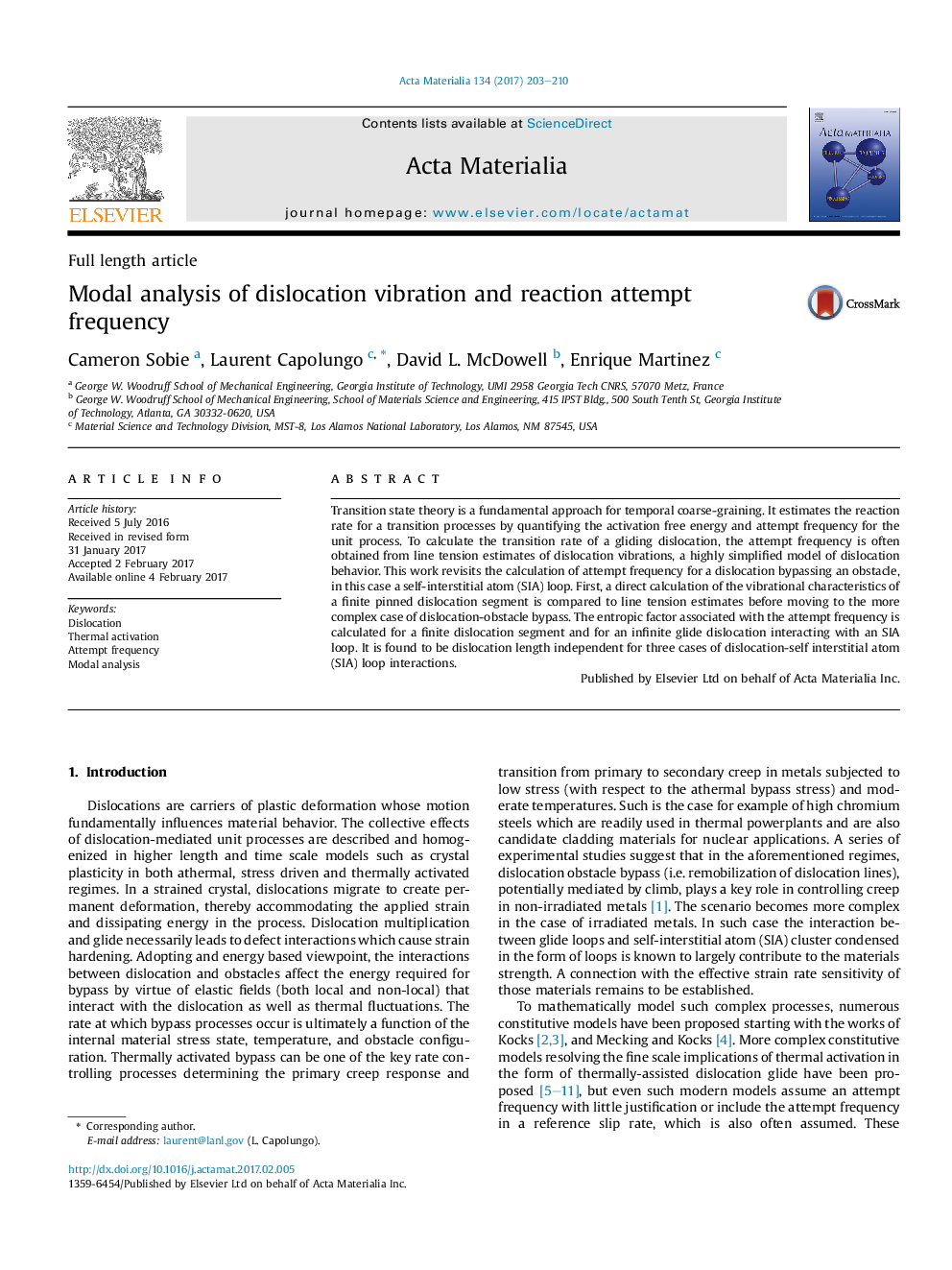| Article ID | Journal | Published Year | Pages | File Type |
|---|---|---|---|---|
| 5435976 | Acta Materialia | 2017 | 8 Pages |
Transition state theory is a fundamental approach for temporal coarse-graining. It estimates the reaction rate for a transition processes by quantifying the activation free energy and attempt frequency for the unit process. To calculate the transition rate of a gliding dislocation, the attempt frequency is often obtained from line tension estimates of dislocation vibrations, a highly simplified model of dislocation behavior. This work revisits the calculation of attempt frequency for a dislocation bypassing an obstacle, in this case a self-interstitial atom (SIA) loop. First, a direct calculation of the vibrational characteristics of a finite pinned dislocation segment is compared to line tension estimates before moving to the more complex case of dislocation-obstacle bypass. The entropic factor associated with the attempt frequency is calculated for a finite dislocation segment and for an infinite glide dislocation interacting with an SIA loop. It is found to be dislocation length independent for three cases of dislocation-self interstitial atom (SIA) loop interactions.
Graphical abstractDownload high-res image (124KB)Download full-size image
